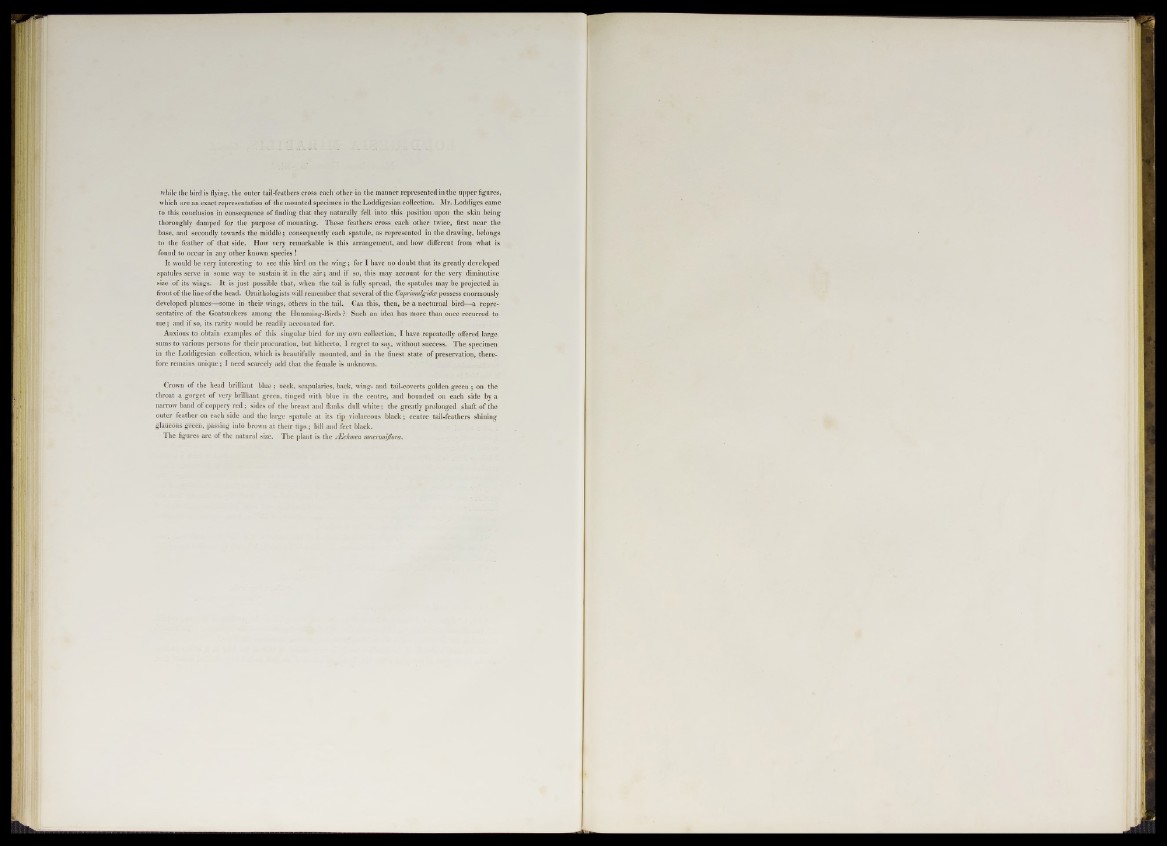
while the bird is flying, the outer tail-feathers cross each other in the manner represented in the upper figures,
which are an exact representation of the mounted specimen in the Loddigesian collection. Mr. Loddiges came
to this conclusion in consequence of finding that they naturally fell into this position upon the skin being
thoroughly damped for the purpose of mounting. These feathers cross each other twice, first near the
base, and secondly towards the middle; consequently each spatule, as represented in the drawing, belongs
to the feather of that side. How very remarkable is this arrangement, and how different from what is
found to occur in any other known species !
It would be very interesting to see this bird ou the wing; for I have no doubt that its greatly developed
spatules serve in some way to sustain it in the air; and if so, this may account for the very diminutive
size of its wings. It is just possible that, when the tail is fully spread, the spatules may be projected in
front of the line of the head. Ornithologists will remember that several of the Caprimulgidce possess enormously
developed plumes—some in their wings, others in the tail. Can this, then, be a nocturnal bird—a representative
of the Goatsuckers among the Humming-Birds ? Such an idea has more than once recurred to
me; and if so, its rarity would be readily accounted for.
Anxious to obtain examples of this singular bird for my own collection, I have repeatedly offered large
sums to various persons for their procuration, but hitherto, I regret to say, without success. The specimen
in the Loddigesian collection, which is beautifully mounted, and in the finest state of preservation, therefore
remains unique; I need scarcely add that the female is unknown.
Crown o f the head brilliaut blue ; neck, scapularies, back, wing- and tail-coverts golden green-; on th e
throat a g o rg e t o f very brilliant green, tinged with blue in the centre, and bounded on each side by a
narrow band o f coppery r e d ; sides o f the breast and flanks dull w h ite : the greatly prolonged shaft o f the
outer feather on each side and the large spatule at its tip violaceous b la ck ; Centre tail-feathers shining
glaucous green, passing into brown a t their tip s ; bill and fe et black.
The figures are of the natural size. The plant is the /Echmea mucromflora.